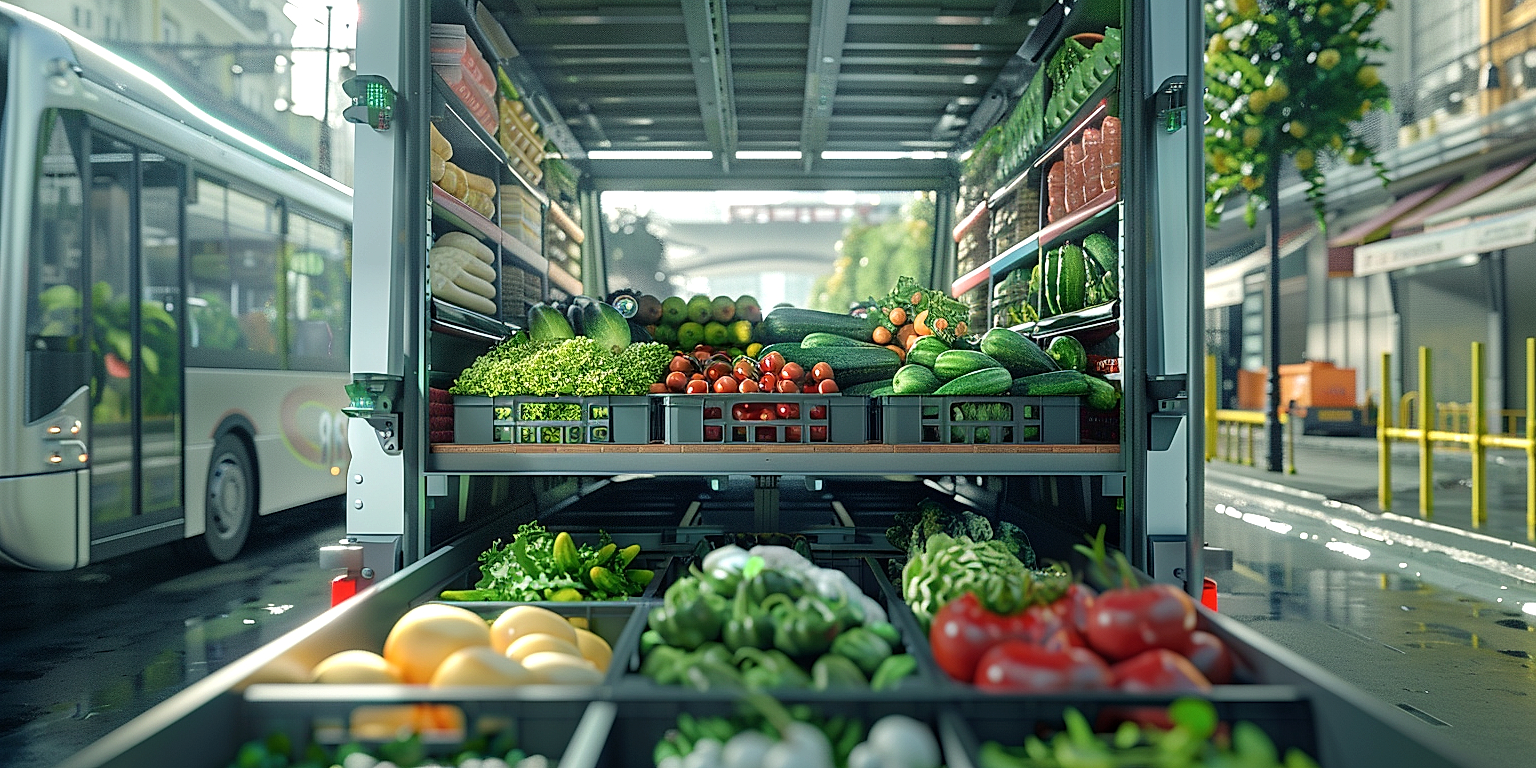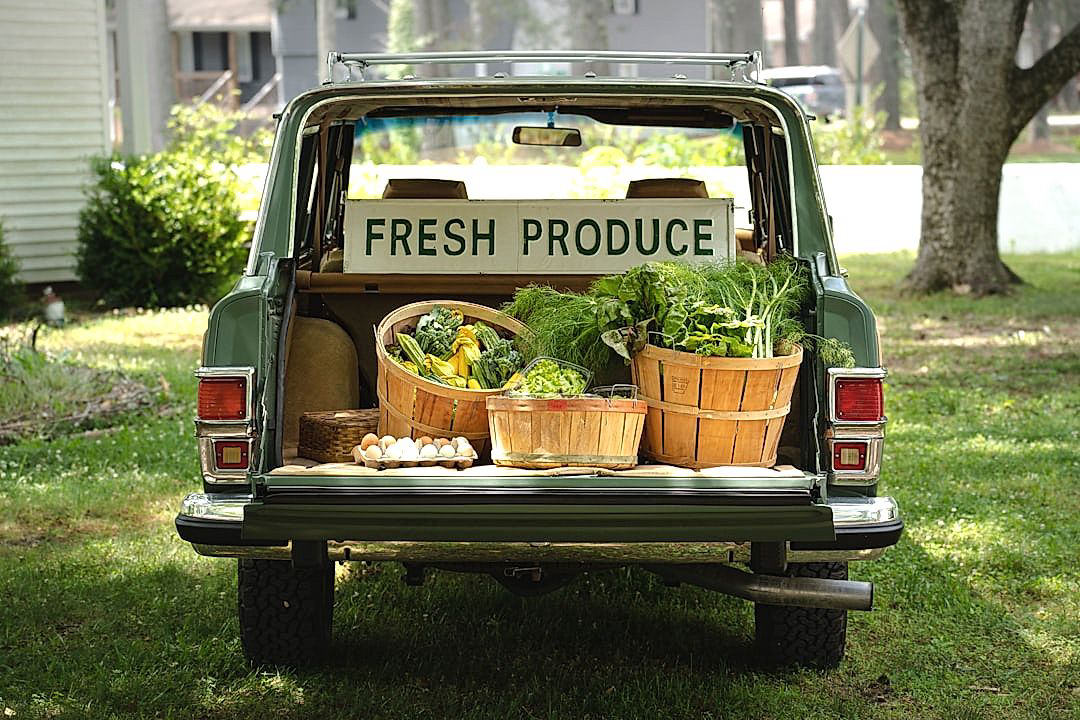The sustainable and efficient distribution of produce represents a critical component of the global food supply chain.
Currently, this sector is facing significant challenges, particularly in terms of its vast carbon footprint.
While the impacts of this issue are far-reaching and complex, we believe there are several practical steps companies can take to reduce these emissions.
The paramount objective is to identify strategies that can improve overall operations while also limit negative environmental effects.
This may seem a daunting task, but with a methodical, science-based approach, significant change is possible.
In this article, we will explore these techniques and their potential to facilitate a more responsible and greener way forward for the industry.
Ways To Reduce Carbon In Produce Distribution Transport
1. Use Electric or Hybrid Delivery Vehicles
As we increasingly prioritize sustainability in our industries, it is undeniable that the transport sector should step up and take part in the reduction of carbon emissions.
One effective method of achieving this initiative within produce distribution is through the advanced application of technology in the form of electric or hybrid delivery vehicles.
Unlike traditional vehicles that run on gasoline or diesel, electric and hybrid vehicles are equipped with rechargeable batteries and electric motors.
They generate less pollution because they emit lesser amounts of toxic gases into the atmosphere, helping significantly to limit our carbon footprint.
Commercial electric vehicles have a smaller carbon footprint compared to conventional vehicles, even when the electricity used to charge them comes from fossil fuels.
This is because, unlike their gasoline counterparts, electric vehicles don’t produce tailpipe emissions when operating on electricity alone.
Apart from their environmental benefit, electric vehicles also have economic advantages.
They commonly have lower operating costs, especially in areas where electricity is cheaper than diesel or gasoline.
This is due to their fewer moving parts which require less maintenance, and the lower cost of electricity as a fuel source compared to gas.
In some areas, they may also benefit from government incentives, tax credits, and rebates aimed at promoting the use of such eco-friendly vehicles.
Hybrid vehicles, on the other hand, combine the advantages of electric motors and conventional engines.
This means they offer extended driving ranges and are more flexible in terms of refuelling options, making them an attractive choice for many transport companies.
They can run on electricity when driving at low speeds and switch to gasoline or diesel fuel when more power is needed, thus saving on fuel costs and emitting less pollution.
The use of electric or hybrid vehicles in produce distribution transport thus stands as an effective method to reduce carbon emissions and promote environmental sustainability.
It sets a progressive example for other sectors to follow and shows that it is entirely possible to align our economic pursuits with our environmental responsibilities.
So, as we move forward, it’s crucial that we continue to explore and invest in such environmentally-friendly solutions.
2. Optimize routes to minimize driving distances
When we discuss means to reduce carbon emissions in produce distribution transport, strategizing the routings cannot be overlooked.
Efficient route planning leads to least possible miles covered by delivery vehicles, thus lowering their carbon footprint.
GPS tracking technologies and advanced software can help in mapping out the most efficient routes for distribution.
For instance, the use of real-time traffic monitoring can help route planners navigate drivers away from congested areas, thereby reducing idle time which leads to unnecessary carbon emissions.
Vehicles can also be batched together based on their destinations to make fewer, more sustainable trips.
This technique often results in reduced fuel consumption and time spent on the road, thus substantially lowering carbon emissions.
This is where logistics experts play a crucial role in developing key tactics to plot effective routes.
They work on analysing variables such as delivery time windows, order sizes, proximity to destinations, and traffic patterns to design optimized routes.
This optimized route planning does not only contribute to reduced carbon emissions, but also proves beneficial from the business perspective.
Ideas such as right-hand routing – where drivers try to make more right turns than left to reduce waiting times at traffic lights, and thus reducing fuel consumption have also been implemented successfully.
Also, by reducing the time vehicles spend on the road, companies can cut down on labor costs and increase productivity.
Moreover, fewer miles travelled means less wear and tear on the vehicles, resulting in lower maintenance costs.
In larger countries, where distances between farms and markets are significantly more, optimized routing can lead to tangible reductions in carbon emissions.
Thus, the strategy of optimizing routes not only offers an environmental benefit in terms of reduced carbon emissions, but also provides economic benefits to businesses.
In the complex process of produce distribution, even a small reduction in carbon emissions can cumulatively lead to a significant positive impact on the environment.
3. Adopt Slow Steaming in Maritime Transport
Maritime transport plays a crucial role in the distribution of produce, connecting growers with markets across the globe.
Despite its efficiency, it is also a significant contributor to carbon emissions and other environmental issues.
One potential solution to this problem is to adopt a practice known as slow steaming.
This involves deliberately reducing the speed at which ships travel in order to reduce fuel consumption and emissions.
This practice emerged in response to the 2008 economic crisis to cut cost on fuel, but it also has environmental benefits.
Slow steaming reduces carbon emissions by as much as 30%, when the speed is cut down by mere 10%.
Moreover, slow steaming can also help reduce other forms of pollution, including sulphur oxide and nitrogen oxide emissions.
Despite these benefits, slow steaming is not without its critics.
Some argue that it results in longer delivery times, which can be problematic for perishable produce.
However, with careful logistical planning and innovative storage solutions, it is possible to mitigate these issues.
Another concern is that slow steaming may lead to increased maintenance costs, as engines are not designed to operate at reduced speeds.
Yet, the fact remains that the environmental benefits of slow steaming are substantial.
Adopting this practice could help companies working in the produce distribution sector to substantially reduce their carbon footprint.
The International Maritime Organization has also proposed limiting vessel speed as part of its strategy to reduce greenhouse gas emissions from ships.
In adopting such measures, produce distribution companies could contribute significantly to environmental sustainability goals whilst still efficiently transporting goods.
In summary, adopting slow steaming within maritime transport represents a practical and effective approach to reduce carbon emissions within the produce distribution industry.
4. Improve load capacity to reduce trips.
One effective way to reduce carbon emissions in the process of produce distribution transport is to improve load capacity.
This involves maximizing the amount of produce each vehicle carries per trip, therefore reducing the number of trips required to deliver the same quantity of produce.
By doing this, companies not only reduce their carbon footprint but also potentially save on fuel costs, thereby making their operations more efficient and sustainable.
To accomplish this, businesses should aim to optimize their load planning by incorporating the best practices from logistics and supply chain management.
For instance, they might utilize more advanced loading and stacking techniques, or replace existing transport vehicles with ones that have larger carrying capacities.
This could involve an upfront investment, but it would likely pay off in the long run in terms of both financial savings and environmental benefits.
Optimizing load capacity is not a one-size-fits-all solution; it will require careful planning and execution, but it’s a big step in moving towards a more sustainable produce distribution system.
Also, using load optimization software can help create the most efficient loading plans, taking into account factors like weight distribution, product dimensions, and perishability.
Moreover, encouraging suppliers to adopt similar practices can have a multiplier effect, greatly amplifying the overall impact on reducing carbon emissions.
Additionally, policies and regulations that favor and incentivize higher load capacities can encourage businesses to adopt these practices more rapidly.
Training logistics staff to properly manage load planning can also be beneficial, helping to maximize capacity usage without compromising on safe and reliable produce delivery.
It is important to note that improving load capacity is not without challenges, as companies have to balance the need for efficient transportation with the quality and freshness of the produce.
However, with a well-planned strategy and the right processes in place, companies can successfully manage these challenges and ultimately reduce their environmental impact.
And lastly, while improving load capacity is a crucial step, it is just one piece of a bigger puzzle in efforts to reduce carbon in produce distribution transport.
5. Convert to lower-carbon biofuels.
The transition to lower-carbon biofuels offers a significant opportunity to reduce the carbon footprint of produce distribution transport.
It’s a move that holds positive implications not only for the environment, but potentially for the bottom line of businesses engaged in this sector.
The term ‘biofuels’ refers to fuels derived from organic materials, often agricultural waste and non-food crops.
Lower-carbon biofuels burn cleaner than conventional fuel, thus producing fewer greenhouse gas emissions.
Utilizing these biofuels can lead to a substantial decrease in carbon emissions, precisely what’s needed for a more sustainable produce distribution transport industry.
Switching to biofuels doesn’t necessarily require a complete overhaul of existing vehicles either.
Many engines can operate on biofuels without significant modifications, making the transition relatively straightforward and cost-effective.
That said, the conversion process does entail some challenges.
These include the need for comprehensive testing to ensure the viability and safety of biofuels, and adjustments to storage and fueling infrastructure.
Despite these hurdles, the benefits of transitioning to lower-carbon biofuels in produce distribution transport are substantial.
In addition to emissions reductions, biofuels also have the potential to reduce dependency on fossil fuels and contribute to energy security.
Moreover, the feedstock for biofuels often constitutes waste products, which allows for a greener, more sustainable fuel cycle.
Furthermore, biofuel production can boost rural economies by creating jobs and revenue streamslinked to the cultivation and processing of feedstock.
In all, the conversion to lower-carbon biofuels represents a practical, accessible and effective pathway to reduce carbon emissions within the produce distribution transport industry.
The broad and clear benefits of this transition justify the attention and investment needed to make it a reality.
6. Invest in Aerodynamic Truck Technology
One of the impactful ways to reduce carbon emissions in produce distribution transport is to invest in aerodynamic truck technology.
This entails implementing modifications on commercial trucks to decrease air resistance.
These modifications consequently increase fuel efficiency, thereby reducing the carbon footprint produced from burning diesel fuel.
By investing in aerodynamic truck technology, distribution companies can significantly reduce their overall carbon emissions and contribute to global sustainability efforts.
Aerodynamics plays a vital role in determining a vehicle’s fuel consumption, with higher air resistance resulting in greater drag and thus higher fuel use.
Trucks, with their large flat surfaces, are particularly prone to high levels of air drag, which increases their fuel consumption and CO2 emissions.
Simple adjustments such as adding fairings, skirts, and tails, or making the front of the truck more rounded can all drastically decrease the driving resistance.
Furthermore, new trucks are often designed with integrated aerodynamics, utilising better shape forms and lighter materials, which enhance their fuel efficiency and hence produce fewer carbon emissions.
Moreover, today, several truck manufacturers are leveraging advanced software and engineering techniques to design and produce trucks with optimal aerodynamics.
By adopting these trucks into their fleet, distribution companies can achieve a substantial reduction in fuel consumption and carbon emissions.
It’s also crucial to note that while the initial investment to upgrade to aerodynamic trucks might be significant, the long term savings from reduced fuel costs would not only compensate for the initial expenses but can also result in overall cost savings.
Importantly, this effort to invest in aerodynamic truck technology falls in line with the global movement towards sustainable transport systems.
While the transition might bring about several logistical and financial challenges, the potential positive implications on our environment and public health are tremendous and undeniable.
In sum, investing in aerodynamic truck technology promises a significant reduction in carbon emissions, positioning it as one of the crucial measures that need to be adopted to achieve low-carbon produce distribution transport.
7. Implement rail transport over trucking
Produce distribution has a significant role to play in the fight against climate change.
One of the most impactful actions a business can take is to implement rail transport over trucking.
This is due to the fact that rail transport is more energy-efficient and emits fewer greenhouse gases per ton of freight moved.
Rail transport can dramatically reduce the carbon footprint of any produce distribution transport.
The Environmental Protection Agency (EPA) estimates that replacing truck transport with rail can reduce greenhouse gas emissions by 75%.
Fewer trucks on the road also mean less traffic congestion and air pollution, further contributing to a healthier environment.
When it comes to long-haul transport, trains are a far superior choice over trucks.
This swap will not only help to cut carbon emissions, but it can also save companies money.
Rail transportation is often cheaper than truck shipping over long distances.
Plus, rail can handle larger volumes of produce, increasing efficiency and reducing the number of total trips needed.
Admittedly, rail transport may not always be feasible in all situations, as it depends heavily on the available infrastructure and geographical layout.
However, by making a conscious effort to use rail when possible, companies can help to drive demand for rail infrastructure improvements.
The benefits of using rail over trucking, in terms of carbon reduction, are significant.
Every little step towards more sustainable produce distribution methods can make a difference in our fight against climate change.
In the end, this transition can also lead to cost savings and efficiency improvements for companies, making it not only an environmentally responsible decision but also a smart business move.
The Bottom Line
It’s evident that sustainable strategies in logistics serve not only to safeguard the environment, but also to enhance business efficiency.
By utilizing electric or hybrid delivery vehicles, adopting slow steaming in maritime transport, and converting to lower-carbon biofuels, businesses can significantly decrease their carbon footprint.
Moreover, optimizing routes, improving load capacity, and implementing rail transport over trucking can considerably reduce fuel consumption and unnecessary expenditure.
Lastly, with aerodynamic truck technology, the fuel efficiency can be further improved, ultimately redefining the operational efficiency and sustainability of the logistics sector.
Thus, environmental sustainability and economic profitability are not mutually exclusive but can indeed coexist in the realm of logistics operations.




